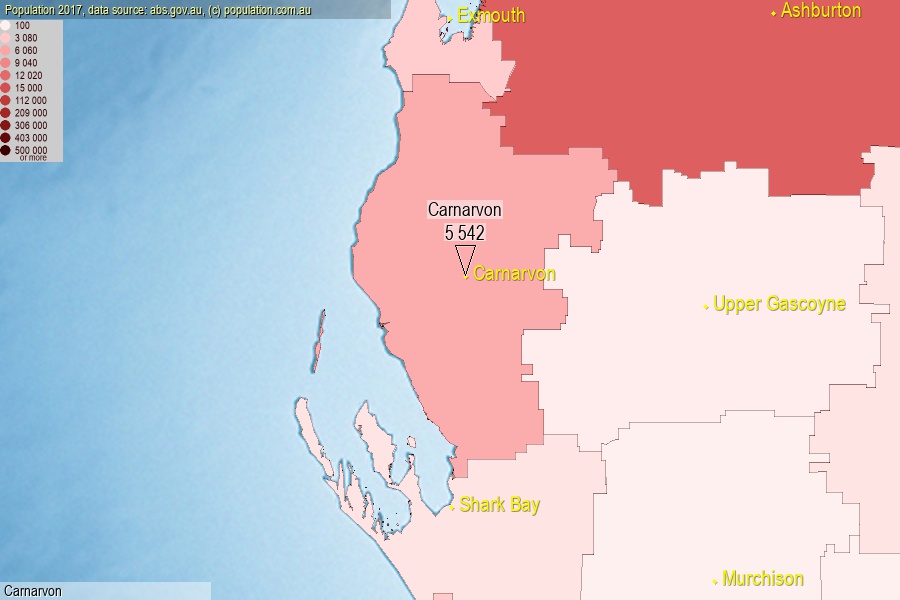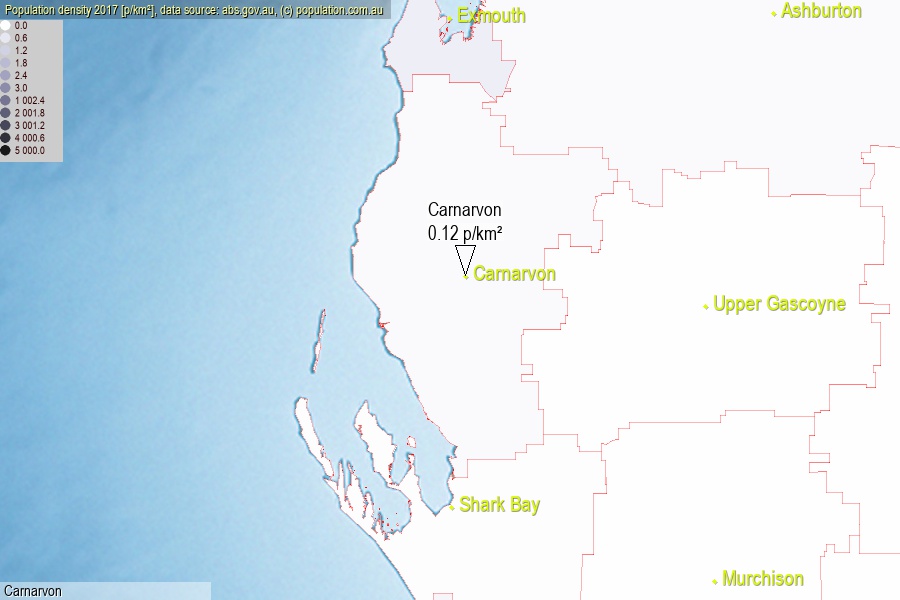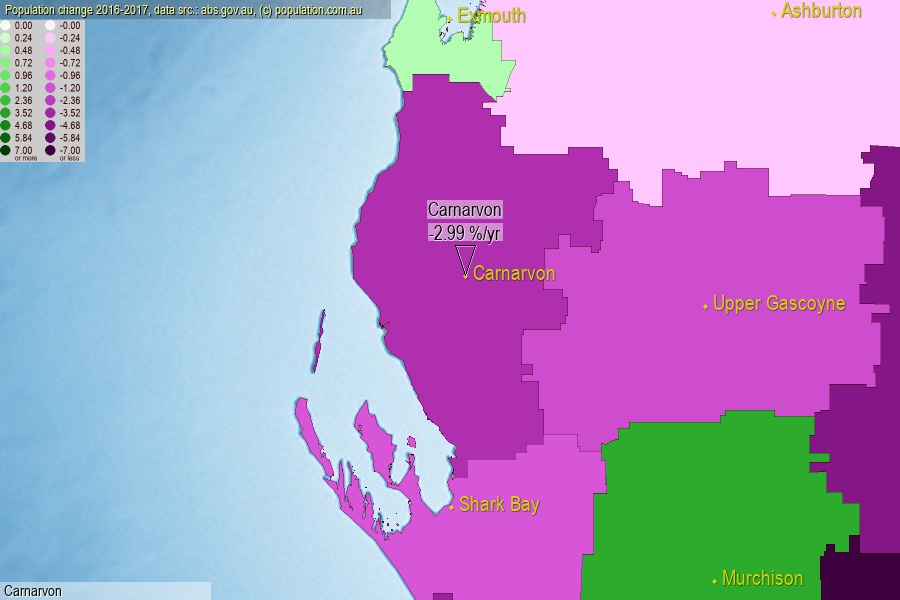 population.com.au
population.com.auLast official estimated population of Carnarvon Shire (as Local Government Area) was 5 542 people (on 2017-06-30)[2]. This was 0.02% of total Australian population and 0.214% of WA population. Area of Carnarvon is 46 574.50 km², in this year population density was 0.12 p/km² . If population growth rate would be same as in period 2016-2017 (-2.99%/yr), Carnarvon population in 2025 would be 4 346. [0]



Click to enlarge. Carnarvon is located in the center of the images.
Population [people], population density [p./km²] and population change [%/year] [2]
[1996-2001] +1.12 %/Y
[2001-2002] -0.92 %/Y
[2002-2003] -1.76 %/Y
[2003-2004] -4.06 %/Y
[2004-2005] -2.28 %/Y
[2005-2006] -1.77 %/Y
[2006-2007] -1.78 %/Y
[2007-2008] +0.40 %/Y
[2008-2009] +0.08 %/Y
[2009-2010] +0.42 %/Y
[2010-2011] +1.32 %/Y
[2011-2012] -0.31 %/Y
[2012-2013] -0.38 %/Y
[2013-2014] -1.38 %/Y
[2014-2015] -1.80 %/Y
[2015-2016] -2.24 %/Y
[2016-2017] -2.99 %/Y
[0] Calculated with linear interpolation from officially estimated population
[1] Read more about LGA and Australian Statistical Geography Standard (ASGS) on abs.gov.au
[2] Population data from Australian Bureau of Statistics (Population and density: 2017; change: 2016-2017)
[3] Digital Boundaries: Australian Statistical Geography Standard (ASGS) 2016.